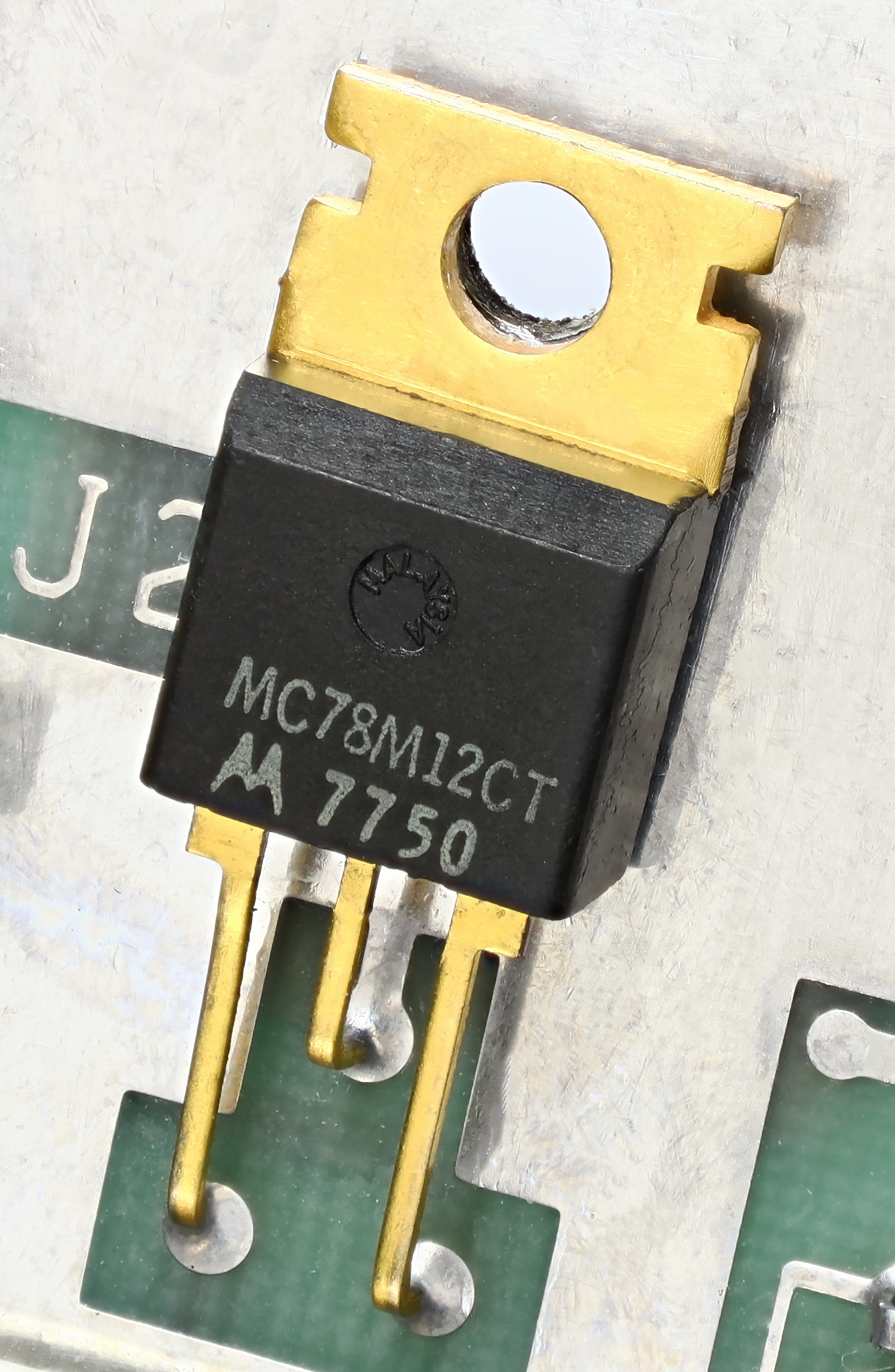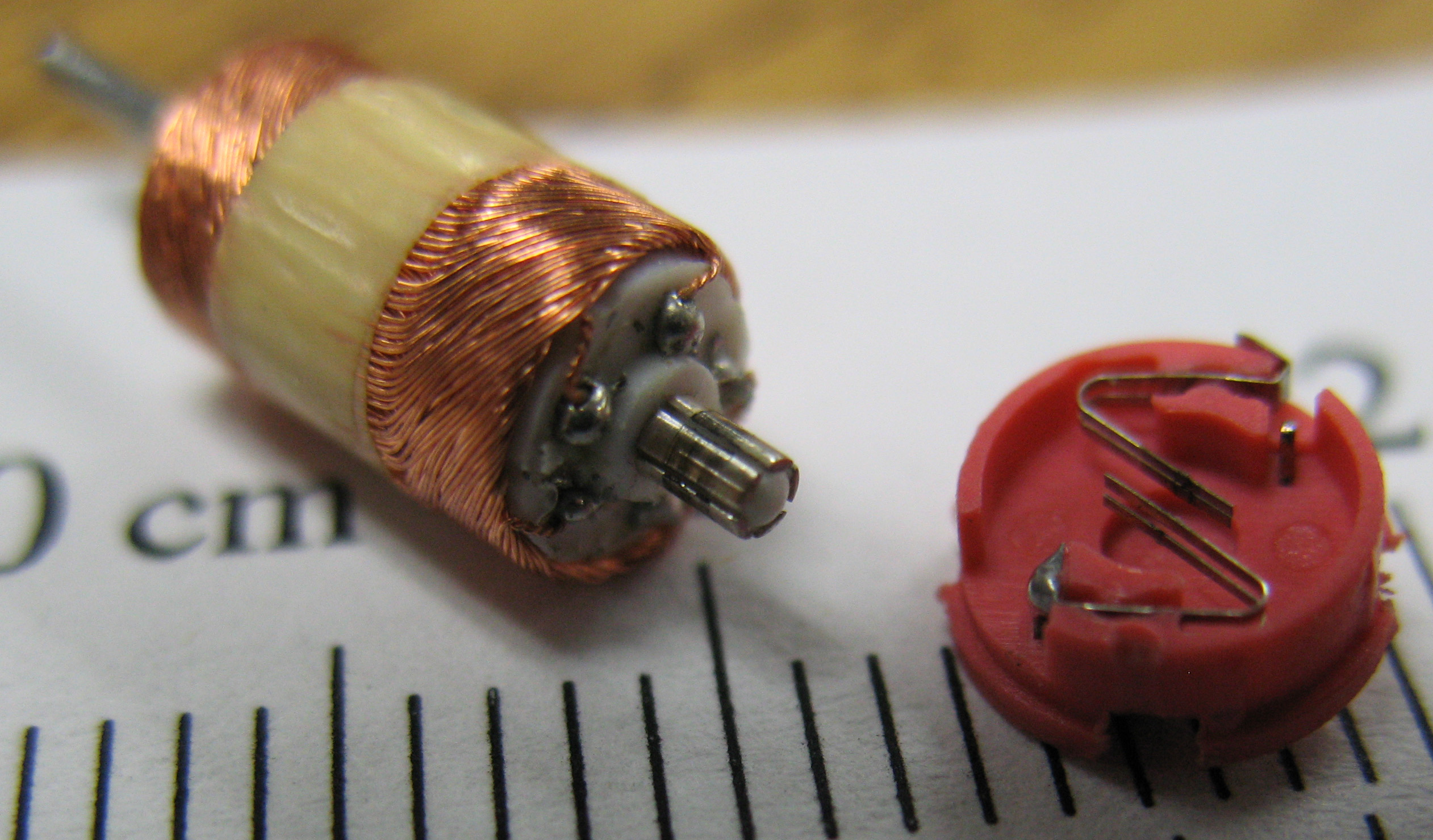|
Third-brush Dynamo
A third-brush dynamo was a type of dynamo, an electrical generator, formerly used for battery charging on motor vehicles. It was superseded, first by a two-brush dynamo equipped with an external voltage regulator, and later by an alternator. Construction As the name implies, the machine had three brushes in contact with the commutator. One was earthed to the frame of the vehicle and another was connected (through a reverse-current cut-out) to the live terminal of the vehicle's battery. The third was connected to the field winding of the dynamo. The other end of the field winding was connected to a switch which could be adjusted (by inserting or removing resistance) to give "low" or "high" charge. This switch was sometimes combined with the vehicle's light switch so that switching on the headlights simultaneously put the dynamo in high charge mode. Disadvantages The third-brush dynamo had the advantage of simplicity but, by modern standards, it gave poor voltage regulation. ... [...More Info...] [...Related Items...] OR: [Wikipedia] [Google] [Baidu] |
Dynamo
file:DynamoElectricMachinesEndViewPartlySection USP284110.png, "Dynamo Electric Machine" (end view, partly section, ) A dynamo is an electrical generator that creates direct current using a commutator (electric), commutator. Dynamos were the first electrical generators capable of delivering power for industry, and the foundation upon which many other later Electric power conversion, electric-power conversion devices were based, including the electric motor, the Alternating current, alternating-current alternator, and the rotary converter. Today, the simpler alternator dominates large scale Electricity generation, power generation, for efficiency, reliability and cost reasons. A dynamo has the disadvantages of a commutator (electric), mechanical commutator. Also, converting alternating to direct current using rectifiers (such as vacuum tubes or more recently via Solid state (electronics), solid state technology) is effective and usually economical. History Induction with pe ... [...More Info...] [...Related Items...] OR: [Wikipedia] [Google] [Baidu] |
Electrical Generator
In electricity generation, a generator is a device that converts motive power (mechanical energy) or fuel-based power (chemical energy) into electric power for use in an external circuit. Sources of mechanical energy include steam turbines, gas turbines, water turbines, internal combustion engines, wind turbines and even hand cranks. The first electromagnetic generator, the Faraday disk, was invented in 1831 by British scientist Michael Faraday. Generators provide nearly all of the power for electric power grids. In addition to electromechanical designs, photovoltaic and fuel cell powered generators utilize solar power and hydrogen-based fuels, respectively, to generate electrical output. The reverse conversion of electrical energy into mechanical energy is done by an electric motor, and motors and generators have many similarities. Many motors can be mechanically driven to generate electricity; frequently they make acceptable manual generators. Terminology Electromagnetic ... [...More Info...] [...Related Items...] OR: [Wikipedia] [Google] [Baidu] |
Car Battery
An automotive battery or car battery is a rechargeable battery that is used to start a motor vehicle. Its main purpose is to provide an electric current to the electric-powered starting motor, which in turn starts the chemically-powered internal combustion engine that actually propels the vehicle. Once the engine is running, power for the car's electrical systems is still supplied by the battery, with the alternator charging the battery as demands increase or decrease. Battery in modern cars Gasoline and diesel engine Typically, starting uses less than three percent of the battery capacity. For this reason, automotive batteries are designed to deliver maximum current for a short period of time. They are sometimes referred to as "SLI batteries" for this reason, for starting, lighting and ignition. SLI batteries are not designed for deep discharging, and a full discharge can reduce the battery's lifespan. As well as starting the engine, an SLI battery supplies the extra power ne ... [...More Info...] [...Related Items...] OR: [Wikipedia] [Google] [Baidu] |
Motor Vehicle
A motor vehicle, also known as motorized vehicle or automotive vehicle, is a self-propelled land vehicle, commonly wheeled, that does not operate on Track (rail transport), rails (such as trains or trams) and is used for the transportation of people or cargo. The vehicle propulsion is provided by an engine or motor, usually an internal combustion engine or an electric motor, or some combination of the two, such as hybrid electric vehicles and plug-in hybrids. For legal purpose, motor vehicles are often identified within a number of vehicle classes including cars, buses, motorcycles, off-road vehicles, light trucks and regular trucks. These classifications vary according to the legal codes of each country. International Organization for Standardization, ISO 3833:1977 is the standard for road vehicle types, terms and definitions. Generally, to avoid requiring people with disabilities from having to possess an operator's license to use one, or requiring tags and insurance, powered ... [...More Info...] [...Related Items...] OR: [Wikipedia] [Google] [Baidu] |
Voltage Regulator
A voltage regulator is a system designed to automatically maintain a constant voltage. A voltage regulator may use a simple feed-forward design or may include negative feedback. It may use an electromechanical mechanism, or electronic components. Depending on the design, it may be used to regulate one or more AC or DC voltages. Electronic voltage regulators are found in devices such as computer power supplies where they stabilize the DC voltages used by the processor and other elements. In automobile alternators and central power station generator plants, voltage regulators control the output of the plant. In an electric power distribution system, voltage regulators may be installed at a substation or along distribution lines so that all customers receive steady voltage independent of how much power is drawn from the line. Electronic voltage regulators A simple voltage/current regulator can be made from a resistor in series with a diode (or series of diodes). Due to the loga ... [...More Info...] [...Related Items...] OR: [Wikipedia] [Google] [Baidu] |
Alternator (automotive)
An alternator is a type of electric generator used in modern automobiles to charge the battery and to power the electrical system when its engine is running. Until the 1960s, automobiles used DC dynamo generators with commutators. As silicon-diode rectifiers became widely available and affordable, the alternator gradually replaced the dynamo. This was encouraged by the increasing electrical power required for cars in this period, with increasing loads from larger headlamps, electric wipers, heated rear windows, and other accessories. History The modern type of vehicle alternators were first used in military applications during World War II, to power radio equipment on specialist vehicles. After the war, other vehicles with high electrical demands — such as ambulances and radio taxis — could also be fitted with optional alternators. Alternators were first introduced as standard equipment on a production car by the Chrysler Corporation on the Valiant in 1960, several year ... [...More Info...] [...Related Items...] OR: [Wikipedia] [Google] [Baidu] |
Brush (electric)
A brush or carbon brush is an electrical contact which conducts current between stationary wires and moving parts, most commonly in a rotating shaft. Typical applications include electric motors, alternators and electric generators. The lifespan of a carbon brush depends on how much the motor is used, and how much power is put through the motor. Etymology For certain types of electric motors or generators to function, the coils of the rotor must be connected to complete an electrical circuit. Originally this was accomplished by affixing a copper or brass commutator or ' slip ring' to the shaft, with springs pressing braided copper wire 'brushes' onto the slip rings or commutator which conduct the current. Such brushes arced and even welded as the commutator rotated, because the brush short–circuited adjacent segments. The cure was the introduction of 'high resistance brushes' made from graphite (sometimes with added copper). Although the resistance was of the order of ten ... [...More Info...] [...Related Items...] OR: [Wikipedia] [Google] [Baidu] |
Commutator (electric)
A commutator is a rotary electrical switch in certain types of electric motors and electrical generators that periodically reverses the current direction between the rotor and the external circuit. It consists of a cylinder composed of multiple metal contact segments on the rotating armature of the machine. Two or more electrical contacts called " brushes" made of a soft conductive material like carbon press against the commutator, making sliding contact with successive segments of the commutator as it rotates. The windings (coils of wire) on the armature are connected to the commutator segments. Commutators are used in direct current (DC) machines: dynamos (DC generators) and many DC motors as well as universal motors. In a motor the commutator applies electric current to the windings. By reversing the current direction in the rotating windings each half turn, a steady rotating force (torque) is produced. In a generator the commutator picks off the current generated in ... [...More Info...] [...Related Items...] OR: [Wikipedia] [Google] [Baidu] |
Ground (electricity)
In electrical engineering, ground or earth is a reference point in an electrical circuit from which voltages are measured, a common return path for electric current, or a direct physical connection to the Earth. Electrical circuits may be connected to ground for several reasons. Exposed conductive parts of electrical equipment are connected to ground, to protect users from electrical shock hazard. If internal insulation fails, dangerous voltages may appear on the exposed conductive parts. Connecting exposed parts to ground will allow circuit breakers (or RCDs) to interrupt power supply in the event of a fault. In electric power distribution systems, a protective earth (PE) conductor is an essential part of the safety provided by the earthing system. Connection to ground also limits the build-up of static electricity when handling flammable products or electrostatic-sensitive devices. In some telegraph and power transmission circuits, the ground itself can be used as one condu ... [...More Info...] [...Related Items...] OR: [Wikipedia] [Google] [Baidu] |
Field Coil
A field coil is an electromagnet used to generate a magnetic field in an electro-magnetic machine, typically a rotating electrical machine such as a motor or generator. It consists of a coil of wire through which a current flows. In a rotating machine, the field coils are wound on an iron magnetic core which guides the magnetic field lines. The magnetic core is in two parts; a stator which is stationary, and a rotor, which rotates within it. The magnetic field lines pass in a continuous loop or magnetic circuit from the stator through the rotor and back through the stator again. The field coils may be on the stator or on the rotor. The magnetic path is characterized by ''poles'', locations at equal angles around the rotor at which the magnetic field lines pass from stator to rotor or vice versa. The stator (and rotor) are classified by the number of poles they have. Most arrangements use one field coil per pole. Some older or simpler arrangements use a single field co ... [...More Info...] [...Related Items...] OR: [Wikipedia] [Google] [Baidu] |
Amplidyne
An amplidyne is an obsolete electromechanical amplifier invented prior to World War II by Ernst Alexanderson. It consists of an electric motor driving a DC generator. The signal to be amplified is applied to the generator's field winding, and its output voltage is an amplified copy of the field current. The amplidyne was used in industry in high power servo and control systems, to amplify low power control signals to control powerful electric motors, for example. It is now mostly obsolete. How an amplidyne works An amplidyne comprises an electric motor which turns a generator on the same shaft. Unlike an ordinary motor-generator, the purpose of an amplidyne is not to generate a steady voltage but to generate a voltage proportional to an input current, to amplify the input in applications where high output power is required. The motor provides the power, turning the generator at a constant speed, and the signal to be amplified is applied to the generator's field winding. The hig ... [...More Info...] [...Related Items...] OR: [Wikipedia] [Google] [Baidu] |
.jpg)
.jpg)







